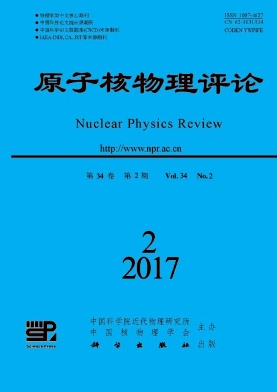|
[1]
|
ZHAO Zhixiang, XIA Haihong. Engineering Sciences,2008,10(3): 66. (in Chinese).(赵志祥, 夏海鸿. 中国工程科学, 2008, 10(3): 66.) |
|
[2]
|
TSUJIMOTO K, SASA T, NISHIHARA K, et al. Progress in Nuclear Energy, 2000, 37(1): 339. |
|
[3]
|
ZHAN Wenlong, XU Hushan. Bulletin of Chinese Academy of Sciences, 2012, 27(3): 375. (in Chinese)(詹文龙, 徐瑚珊. 中国科学院院刊, 2012, 27(3): 375.) |
|
[4]
|
Anon. Invention & Innovation (Integrated Technology), 2013(04): 10. (in Chinese)(佚名. 发明与创新(综合科技), 2013 (04):10.) |
|
[5]
|
SZABO J. ISRN LUTMDN/TMHP-10/5227-SE, 2010. |
|
[6]
|
ATCHISON F, BAUMANN P, BRYŚT, et al. Nucl Instr and Meth, 2005, 539(3): 646. |
|
[7]
|
PRAKASH K A, BISWAS G, KUMAR B V R. International Journal of Heat & Mass Transfer, 2006, 49( 23-24): 4633. |
|
[8]
|
DURY T V. Journal of Nuclear Science and Technology,2004, 41(3): 285. |
|
[9]
|
ABDERRAHIM H A, GALAMBOS J, GOHAR Y, et al.DOE white Paper on ADS, 2010, 1(1): 1. |
|
[10]
|
MONGELLI S T, MAIORINO J R, ANÉFALOS S, et al.Brazilian Journal of Physics, 2005, 35(3B): 894. |
|
[11]
|
ZHOU Z, XIAO S, YANG Y, et al. Thermal-Hydraulic Anal-ysis of Concept Design of Spallation Target in Chinese Ac-celerator Driven Subcritical System[C]// 2012 20th Interna-tional Conference on Nuclear Engineering and the ASME 2012 Power Conference. 2012:721. |
|
[12]
|
Van TICHELEN K, KUPSCHUS P, DIERCKX M, et al.Free Surface Fluid Dynamics Code Adaptation by Exper-imental Evidence for the MYRRHA Spallation Target[C]//Theoretical and Experimental Studies of Heavy Liquid Metal Thermal Hydraulics: Proceedings of a Technical Meet-ing, Held in Karlsruhe, Germany, 28-31 October 2003. Inter-national Atomic Energy Agency, 2006: 101. |
|
[13]
|
ZHAO Dongwei, DONG Changyin, ZHANG Qi, et al. Jour-nal of the University of Petroleum, China(Edition of Natural Science), 2004, 28(4): 59. (in Chinese)(赵东伟, 董长银, 张琪, 等. 石油大学学报(自然科学版), 2004,28(4): 59.) |
|
[14]
|
LI Jun, LUO wen, XIAO Yongjun, et al. Nuclear Physics Review, 2014,31 (4): 550. (in Chinese)(李军, 罗文, 肖拥军, 等. 原子核物理评论, 2014,31(4):550.) |
|
[15]
|
SELTBORG P, WALLENIUS J, TUCEK K, et al. Nuclear science and engineering, 2003, 145(3): 390. |
|
[16]
|
WANG Yuwei, YANG Yongwei, CUI Pengfei. Energy Science and Technology, 2011, 45 (9): 1065. (in Chinese)(王育威, 杨永伟, 崔鹏飞. 原子能科学技术, 2011, 45(9): 1065.) |
|
[17]
|
PELOWITZ D B, MCNPXTM U S. Los Alamos National Laboratory, California USA, 2011. |
|
[18]
|
TAO Zhendong, ZHENG Shaohua. Powder Engineering and Equipment [M]. Beijing: Chemical Industry Press, 2010. (in Chinese)(陶珍东, 郑少华. 粉体工程与设备[M]. 北京:化学工业出版社,2010.) |






 甘公网安备 62010202000723号
甘公网安备 62010202000723号 DownLoad:
DownLoad: